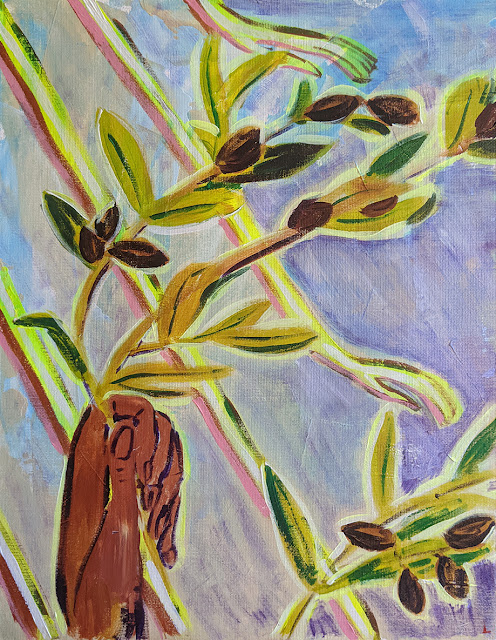Akhenaten, an infamous pharaoh. He is known for being potentially the first monotheist, attempting to convert ancient Egypt from polytheism to the worship of the Aten alone. The Aten, also generally known as the "Sun God", the sun disk.
The other day, I saw a Facebook post shared by Kara Cooney - Egyptologist. An image of a carving from Amarna, the capital city constructed by Akhenaten in honor of his new religion.
Hands of the Sun original painting and fine art prints available through Saatchi Art. Greeting cards, socks, and a wide variety of other merch available through RedBubble or Fine Art America.
Immediately, I thought, the hands of the Sun are female. I commented, and Kara Cooney agreed. She replied to my comment! Shriek! Kara Cooney talked to me! LOL. But yes, the hands of the Sun are female.
Beyond Kara Cooney's confirmation on Facebook, research shows that humans are able to distinguish sex based on hands alone with high accuracy. "Experimental data has shown that "human hands can be used as a cue to an individual’s sex even when colour and texture cues are removed and presentations are brief. ...When hands are sexually ambiguous observers tend to classify them as male more often than female. ...“Male bias” arises not from sensitivity differences but from differences in response biases. Observers are conservative in their judgements of targets as female but liberal in their judgements of targets as male." So, if we observe that a hand is female, it is highly likely that said hand is female.
So...the "Sun God", the Aten, has the hands of a female. Was the first monotheist worshipping a Sun Goddess? At least partially, yes. Calling the Aten a "Sun God" is clearly incorrect.
Akhenaten is also known for being portrayed in artwork with exaggerated feminine features. Marija Gimbutas writes in The Living Goddesses that exaggerated body parts were meant to convey different manifestations of the divine feminine. Akhenaten clearly venerated the divine feminine.
Akhenaten with breasts, exagerated hips and belly, and a feminine looking genital area.



Comments
Post a Comment